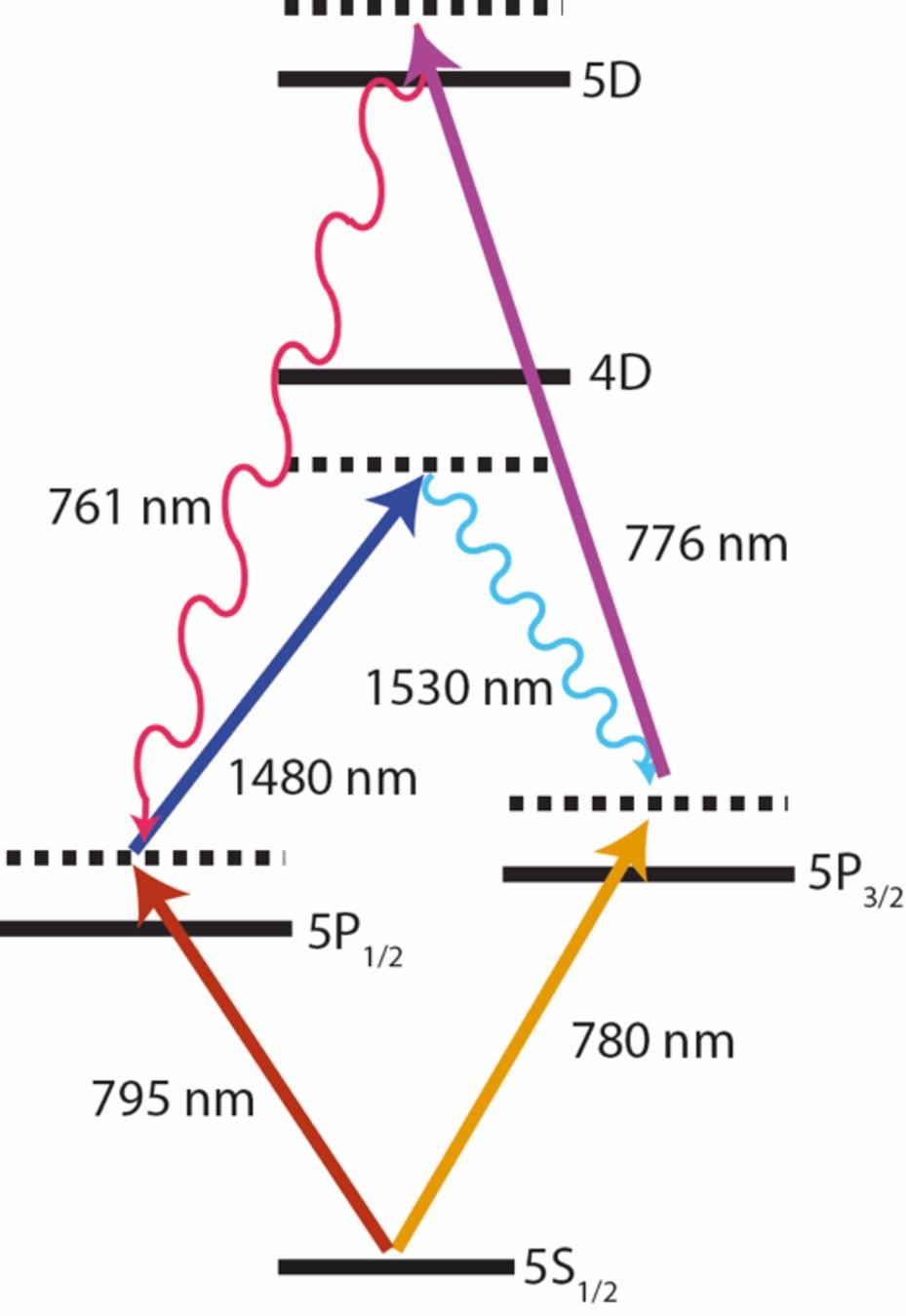Quantum Atom-Photonics
The advent of hollow-core photonic crystal fibre has revolutionised methods for creating strong interactions between light and matter. This is achieved by confining light and gas within the same small volume. We are making use of this technology to explore extreme atom-light interaction phenomena, such as the creation of efficient quantum memories and frequency-conversion.
-
Quantum State Storage and Manipulations
The ability to store and manipulate optical quantum information is crucial for delivering next-generation computing, protect privacy with absolutely-secure communications and provide ultra-precise measurement standards.
The extreme atom-light interaction strengths within our Rubidium-filled hollow-core fibres provide the ideal environment for efficient storage and retrieval of photons. We are combining these with state-of-the-art quantum storage techniques to delivering a compact, robust and modular “quantum node”. This node will integrate directly with current communications infrastructure, allowing for the creation of a quantum internet – the vital missing ingredient needed to overcome the experimental hurdles that are limiting the potential of current quantum technologies.For more information, contact Dr Chris Perrella.
- Hilton, A. P., Perrella, C., Luiten, A. N. & Light, P. S. Phys. Rev. Appl. 11, 024065 (2019), 10.1103/PhysRevApplied.11.024065
- Hilton, A. P. et al. Phys. Rev. Appl. 10, 044034 (2018), 10.1103/PhysRevApplied.10.044034
- Perrella, C., Light, P. S. S., Vahid, S. A., Benabid, F. & Luiten, A. N. N. Phys. Rev. Appl. 9, 044001 (2018)., 10.1103/PhysRevApplied.9.044001
-
Quantum Transduction

Energy-levels of Rubidium that can be used for four-wave mixing.
Being able to transfer quantum information between different wavelengths is a critical challenge for creating a global quantum information network built using different technologies. For instance, the optimal wavelength for optical quantum information storage is around 800 nm, but the lowest losses in optical fibres occur at 1500 nm. The aim of this project is to demonstrate frequency conversion of light pulses from 795 nm to 1530 nm using a technique known as four-wave mixing in rubidium-filled hollow-core photonic crystal fibres. The highly-nonlinear nature of atom-light interactions in our atom-loaded hollow-core fibres should provide a significant boost in efficiency for this process. Apart from enabling long-distance quantum communications, this technique could also be used to create quantum resources such as entangled photon pairs, or perform quantum non-demolition measurements.
For more information, contact Dr Chris Perrella.
